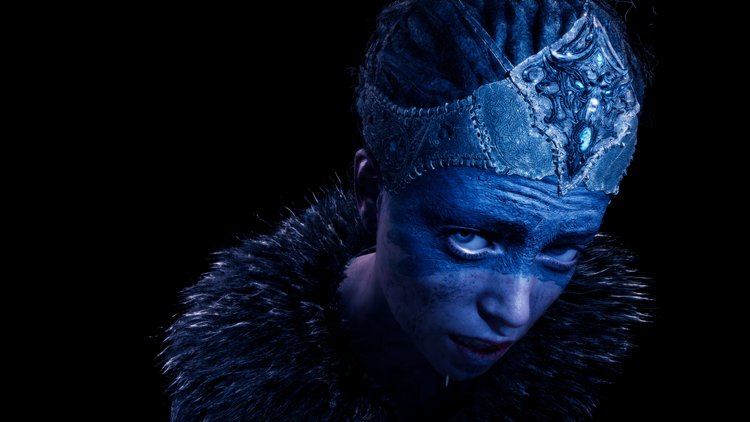Ninja Theory’s most recent entry into the video game sphere, Hellblade: Senua’s Sacrifice, is a captivating yet terrifying game experience unlike any I have ever played before. The game revolves around the protagonist Senua, a warrior from a Celtic tribe. She descends into the Norse underworld of Helheim so that she may resurrect Dillion, her murdered lover. From Hellblade’s start, it is made clear that this journey symbolically conveys Senua’s experiences with psychosis, particularly after the trauma of Dillion’s brutal death. By portraying psychosis through this medium, I would argue that Ninja Theory has depicted this condition in a way that no other medium has captured-or could possibly capture-before.
On a visual level, the game is gorgeous, which is especially impressive considering its marketing as an indie game with AAA quality, but half the typical price tag. Each scene looks breathtaking, bringing to life a fictional realm that is both beautiful but haunting, horrifying yet stunning. This also comes across in Senua herself, with Melina Juergens’s performance highlighting her ferocity, vulnerability, and anguish.




The narrative of the game seems fairly simple and archetypal at first glance. It The game presents itself like any other ancient classical story where the hero travels to a mythical realm to fight some ultimate evil and achieve a noble, romantic goal by the end. Hellblade, however, first subverts by reversing the typical gender roles by having a woman as its hero, while her male lover stands in as what would typically be considered the “damsel in distress.” Furthermore, because of its themes regarding mental health, it deals with its plot points and symbolism in a way unique to Senua’s psyche and ends in a surprising fashion that you would not expect the typical hero narrative to go.
With all of that said, the sound design is definitely the best part of the game. Senua constantly hears running commentary from multiple voices in her head, and Ninja Theory crafted the game’s audio in a way to imitate this experience through binaural recording. Playing with headphones (as recommended by the game before playing) allows for the player to more fully enter Senua’s world and understand her perspective even further. The voices themselves are creepy, misleading, and even helpful at times when they warn you about potential attacks in combat. One voice even serves as a sort of narrator, speaking directly to the player. This element particularly lends to the argument that Senua’s story can only be told in game format since the player becomes completely submerged in her viewpoint through gameplay and these directional noises.
As for the game’s limitations, the combat is simplistic in its execution, not providing the player much variation in how they fight enemies. The enemies, aside from the bosses, also don’t change much, making one fight the same types over and over again. Additionally, the puzzles within the game can be frustrating at times to complete. These elements, however, don’t hold back Hellblade from achieving its vision and being a beautiful piece of both storytelling and art. From my perspective, Hellblade’s harrowing journey with Senua is an experience worth having (even if it makes you cry like I did).


